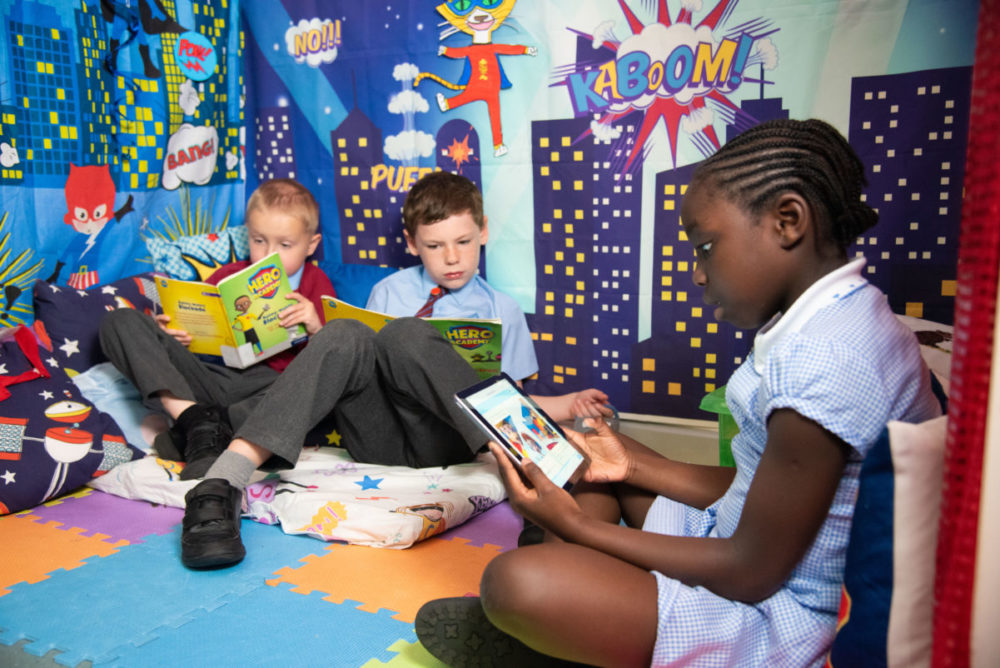The National Literacy Trust’s latest study on digital reading (Children, Young People and Digital Reading by Christina Clark and Irene Picton, 2019) assesses the impact technology has on reading attainment and enjoyment. The report draws on previous studies from 2015 and 2018 and a new survey of nearly 57,000 children and young people aged 9 to 18 carried out between January and March 2019.
eBooks could help to engage more children in reading
One of the strongest themes to emerge from the report is that children with low reading engagement are more likely to read on screen compared to their peers with higher reading engagement (who report reading both print and on screen). The report proposes that being given more opportunities to read eBooks could help to enthuse the less engaged.
Digital reading could even improve attitudes to print reading
For this group, reading enjoyment increased not only in relation to reading on screen but also in relation to reading in print, indicating that reading digitally has the potential to provide a gateway to wider reading.
Teachers feel that technology can help strugglers and boys
The Trust’s study also found that some teachers felt technology may support literacy for certain groups of children, such as boys and struggling readers.

Detailed findings
- Print is still the dominant reading format for most children and young people. For example, 55% of 9 to 18 year olds said they read fiction in print. Other texts, such as song lyrics and the news, are more likely to be consumed on screen.
- There has been a small rise in the number of children who read digitally in 2019 compared with 2018 (a difference of 0.7 percentage points for non-fiction, for example).
- Boys with the lowest levels of engagement are more than twice as likely to read fiction on screen compared with their more engaged peers.
- Pupils who receive free school meals (FSM) are slightly more likely to read on screen. The survey found that 24% of FSM pupils read fiction on screen compared with 16% of non-FSM pupils.
- A similar preference for screen-reading emerges for children with low confidence in reading, low reading frequency and poor reading attitudes.
Conclusion
The report concludes that technology can provide opportunities for all children to engage with a wider variety of texts, not just those who are less enthused with reading.

How Oxford Reading Buddy can engage children
- Oxford Reading Buddy could provide the bridge between screen reading and the printed book. While it offers hundreds of eBooks, it also encourages print reading through quizzes on print-only titles, plus badges that reward both print and digital reading.
- Every child can choose their own friendly ‘buddy’ to personalize their experience and motivate and support their reading.
- The Reading Buddy helps children to increase their ability and confidence by developing their comprehension skills through modelling and prompting.
- Oxford Reading Buddy provides a fantastic choice of books from a variety of genres, styles and subjects, tailored to the child’s reading level, so that they can find something that they like at an appropriate level of challenge.
- Comprehension quizzes check understanding and help children progress through the reading levels. They are pitched at exactly the right level for the individual and have varied and engaging question types.
- A personalized progress screen shows children everything they have read within the system or logged from elsewhere. It provides a motivating record of achievement to foster pride and to share with others.

To find out more about Oxford Reading Buddy,
visit our website.
Visit the National Literacy Trust’s website to read the full report.
